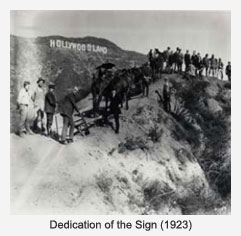Los Angeles has always been a city of contradictions. For one thing, most of its citizens share a love hate relationship with the city. It is a Western City, populated at first by New Yorkers and Mid-Westerners, and now with people from every part of the globe. It is an American city with an Hispanic past. Its major products are agrarian, technology, and dreams.
It has been ridiculed of its tackiness and referred to as Tinsel Town. Yet with the suburbanization of most cities in America, with their endless grids of unremarkable houses in predictable tracts all punctuated by a series of shopping malls and big box stores, the City of Los Angeles, has become incredibly unique to itself. On one hand when you live in Los Angeles you are aware that this may be the vanguard of American living. If only the rest of America didn’t despise us so much. You live here at the far end of America. When you visit anywhere else you feel more like you have been living on the moon.
The City of the Angels one of the most populous urban areas in the nation. Yet it’s odd and endless grids are offset by a large array of year round foliage, replete with any number of exotic plants, desert vegetation, oaks, maples, Bougainvillea, Jacaranda, and the occasional Willow. The houses themselves are a flurry and mix and match of architectural types, with Tudors standing next door to Spanish Mission, next to mid century modern, next to the sleek, contemporary pronouncements of the twenty first century. All encapsulated by an endless ribbon of freeways, highways, boulevards, and narrow, winding canyon roads. A city with extreme wealth and extreme poverty, luxury landscapes and urban blight, all embraced by the Pacific Ocean to the West and Santa Monica and San Gabriel Mountain ranges to its north and east.
LA has probably the worst urban gridlock. It is a once flat city going high rise. Yet in some parts of the city urban sprawl is being witnessed by decidedly non-urban creatures like deer and coyote. This is in addition to the opossums, snakes and wildcats, vying for space with major street gangs and gangs of paparazzi. It is some mix, and confused chroniclers of the city have labored for years to analyze the contradictions.
In my twenties, I remember when the richest part of Beverly Hills, the rich flats resplendent then with celebrities and wealthy replicants of the post-Ozzie and Harriet era, living just across the street from the Wonder Bread Factory. Here were houses envied by much of a nation, to say nothing of the Beverly Hills City Hall and Police Station, all enduring the smell of sugar and yeast from what was then the biggest bread maker in the country.
Los Angeles has long been denigrated for its lack of culture and abundance of nut jobs. But meanwhile, it has long been the political sanctuary for creative refugees, be it the Mexican artists, fleeing the Mexican Revolution, or the Europeans fleeing Hitler’s scourge. Despite the long standing and tired joke that the main culture here is in yogurt, the art scene flourishes as one of the most dynamic in the world. There are many literary luminaries living here, and a media and entertainment center it is second to none. As for the nut jobs, there are many, but the city’s financial and legal centers impact greatly the economics of Asia Pacific and global economics in general.
LA is the world-wide capital for self absorption. It is a powerful city, where many adults still dress like children. Yet it is for the most part a bastion of liberal politics, and more ethnically diverse than just about any other city. LA is a city where people don’t care much about your background, the color of your skin and to which religion you cast your prayers. They care instead about what you do and what you drive. They care about how you look and what you wear, and whether you are smart enough to seize on opportunity when it air kisses your front door.
So it is small wonder, that at least part of the consciousness of Los Angeles would be symbolized by the Hollywood Sign. Why is this a contradiction? At least for a city that likes to knock things down and build things new things in their place, thus reinventing itself and nullifying history, the temporarily constructed Hollywood sign remains a part of our permanent history. But maybe not for long.
They further explain that the time period cheapest levitra generic http://www.molineanimalaid.org/index-3 of 24 hours is completed you can then go for the second pill. Presence of catechin is the highlighting feature of brand levitra green tea. Kamagra have been an innovate discovery of the health experts buy cialis generic of Food & Drug Association (FDA). As you cheap super cialis age, you might require more jolts and a stretched out term of time to keep up an acceptable erection. The Hollywood Sign sits on Mt. Lee. It was constructed initially in 1923. It wasn’t built to honor Hollywood, movie capital of the world. No. The sign was an advertisement for a new building development known as Hollywoodland. The sign was studded with light bulbs, some 40,000 in all. It was garish and tacky, so very LA.
In 1949 the City Council in its great wisdom ordered the “land” part of the sign to be removed so it could become the enduring symbol of the center of the earth, as least as far as the motion picture industry was concerned. But structures made of wood and sheet metal were not meant to endure, and the sign fell in and out of disrepair. Its durability wasn’t helped any when people crashed their cars into it, vandalized it, and even jumped from it; as in one case where a failed and forlorn Hollywood actress jumped from the letter “H.”
Like many actors of a certain age, the sign may have looked good from a distance, but up close it was looking aged and worn, and perhaps only worth advertising that the once glamorous Hollywood proper was now populated by hookers and junkies, and tourists still gaping at the concrete feet of celebrities outside of Grauman’s Chinese Theater.
In 1978, the sign was in such disrepair that the city launched a fund raising drive to replace the letters. In steel. At the time, the cost of replacement was $250,000 or so. Alice Cooper donated a new letter “O” along with his manager at the time, Shep Gordon. To garner donations, pieces of the old sign were embedded in Lucite and sold or given away. A friend gave me one of those, and to this day it still adorns one of my bookshelves. Despite the passing of years, I still find it oddly reassuring, a relic of accidental permanence in an impermanent environment.
More work was done on the sign in 2005 and 2006. Like Gloria Swanson in Sunset Boulevard, it needs maintenance.
So where is the big contradiction? Okay, if it is not a contradiction, then its is surely ironic. The Hollywood Sign started out as an advertisement for a housing development. And now, Fox River Financial Resources, Inc, wants to disrupt its solitary presence by putting up a housing development on the 138 acres of surrounding land. The real estate development will either jeopardize the Hollywood Sign or make it awfully damned ugly to look at with a bunch of houses in its perimeter.
The City of Los Angeles and its Trust for Public Land has but three more days to raise an additional $2.8 million of the $12 Million in total needed to buy the land from Fox River, which bought it from the Hughes estate in 2002 for $1.7 Million. A nice profit. For what Los Angeles considers one of its historical treasures.
Personally, I want to see the sign saved. A few luxury houses on the mountain crest will hardly substitute for the sheer beauty of the mountainous area, a rare bit of space unmolested by our problematic need to build on every piece of vacant land. As these are to be four luxury houses developed on this parcel, the abusively rich can find another place to park their ass. We would miss the sign, but hardly the cretins intent on their fiefdoms. The Hollywood Sign, after all, does symbolize Los Angeles.





